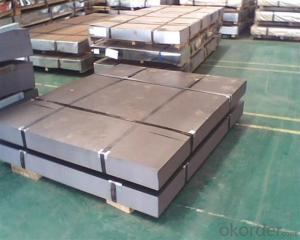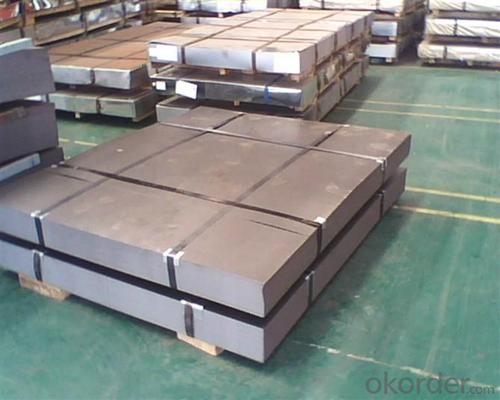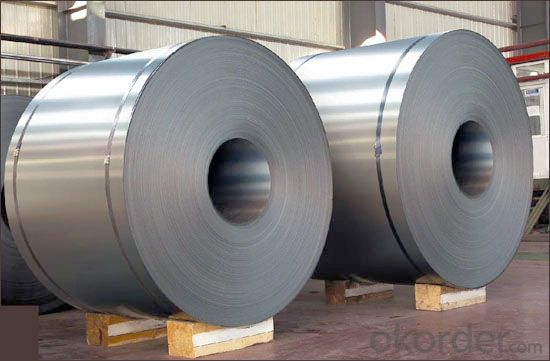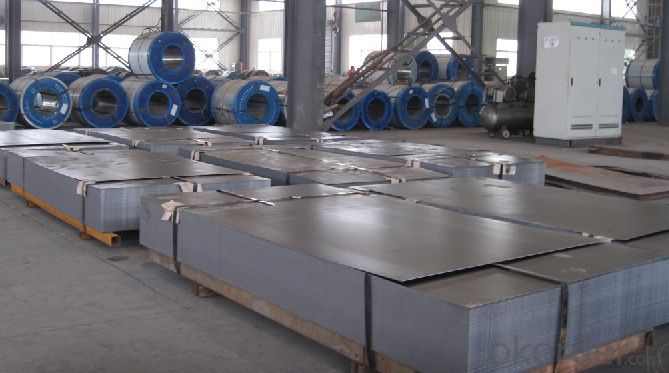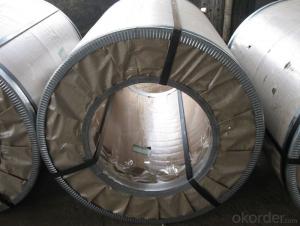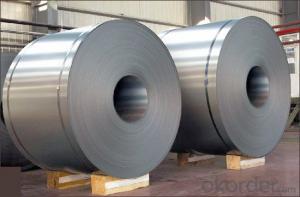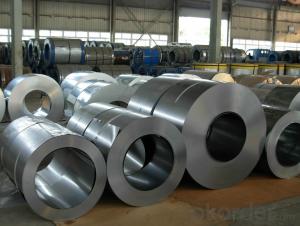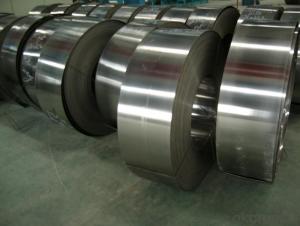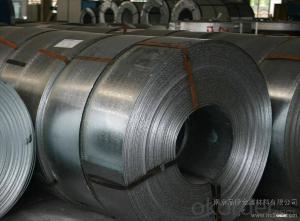Chinese Best Cold Rolled Steel Coil Sheet JIS G3141
- Loading Port:
- China main port
- Payment Terms:
- TT OR LC
- Min Order Qty:
- 50 m.t.
- Supply Capability:
- 10000 m.t./month
OKorder Service Pledge
OKorder Financial Service
You Might Also Like
Chinese Best Cold Rolled Steel Coil Sheet JIS G3141
1.Structure of Chinese Best Cold Rolled Steel Coil Sheet JIS G3141:
The raw material of cold rolled steel coil/sheet is high quality hot rolled product, and after pickling continuous rolling, degreasing, annealing,skin pass,slitting and cut to length line etc. Along with it many kinds of new technology and new process of global cold rolling production have been applied. Therefore the quality of the goods could be guaranteed. The product is widely used in outdoor and interior decoration, furnishing manufacturing, home appliance, automobile etc.
2.Main Features of Chinese Best Cold Rolled Steel Coil Sheet JIS G3141:
• Excellent process capability
• Smooth and flat surface
• Workability, durability
• Excellent heat resistance performance
• High strength
• Good formability
• Good visual effect
3.Cold Rolled Steel Images
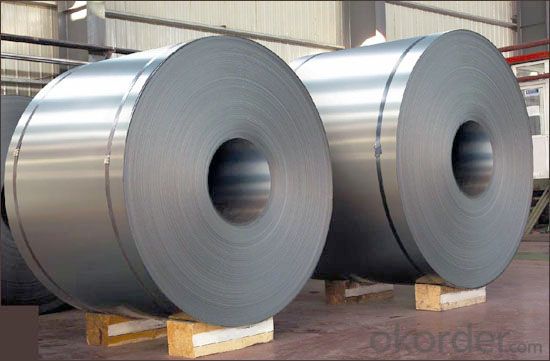
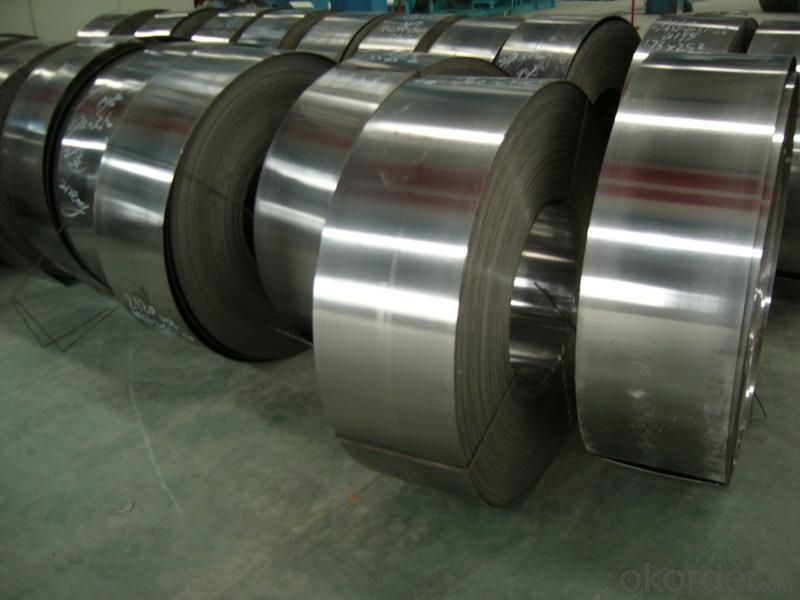
4.Chinese Best Cold Rolled Steel Coil Sheet JIS G3141 Specification
Standard:AISI,ASTM,DIN,GB,JIS,JIS G3302 ASTM 653M EN10142
Grade: Q195~Q345
Thickness: 0.16mm~2.0mm
Width: 1250mm MAX
Coil weight:3-12 MT
Coil ID:508/610mm
5.FAQ of Chinese Best Cold Rolled Steel Coil Sheet JIS G3141
We have organized several common questions for our clients,may help you sincerely:
1.How to guarantee the quality of the products?
We have established the international advanced quality management system,every link from raw material to final product we have strict quality test;We resolutely put an end to unqualified products flowing into the market. At the same time, we will provide necessary follow-up service assurance.
2. How long can we receive the product after purchase?
Usually within thirty working days after receiving buyer’s advance payment or LC. We will arrange the factory manufacturing as soon as possible. The cargo readiness usually takes 15-25 days, but the shipment will depend on the vessel situation.
- Q: What is the tensile strength of steel coils?
- The tensile strength of steel coils can vary depending on the specific grade of steel used, but it typically ranges from 300 to 2,000 megapascals (MPa).
- Q: How are steel coils used in the manufacturing of storage shelves?
- Steel coils are used in the manufacturing of storage shelves by being cut and shaped into the desired size and design. The coils are typically processed through a roll forming machine which bends and molds the steel into the required shape for the shelves. This process allows for high efficiency and precision in creating uniform and durable storage shelves.
- Q: I have a belly button piercing and the metal is stainless steel.. I was wondering does it develop rust whenever you go shower and clean it? Can I still swim in the summer with it or do I have to take it out? What happens if I swim in the pool with it?
- No it won't rust. Just make sure to get the pool water out of the piercing when done at the pool. Just to avoid drying out the skin too much.
- Q: What minerals are mixed to make steel?
- Carbon from coal, Iron from iron ore, Calcium from limestone, Oxygen from compressed O2.
- Q: What are the advantages of using hot-rolled steel coils?
- Hot-rolled steel coils have several advantages. Firstly, they are produced at high temperatures, resulting in a more malleable and ductile material that can be easily shaped and formed. This makes hot-rolled steel coils ideal for a wide range of applications, such as construction, automotive, and machinery manufacturing. Additionally, the hot-rolling process enhances the mechanical properties of the steel, including increased strength and toughness. Moreover, hot-rolled steel coils have a lower cost compared to cold-rolled steel, making them a cost-effective choice for many industries.
- Q: What are the different grades of steel used in manufacturing steel coils?
- The different grades of steel used in manufacturing steel coils can vary depending on the specific application and requirements. Some commonly used grades include low carbon steel, medium carbon steel, high carbon steel, stainless steel, and alloy steel. Each grade has its own unique properties and characteristics that make it suitable for different purposes in the manufacturing process.
- Q: How do steel coils perform in high-pressure applications?
- Steel coils perform well in high-pressure applications due to their inherent strength and durability. The high tensile strength of steel allows it to withstand the intense pressure without deformation or failure. Additionally, steel coils can be manufactured to precise specifications, ensuring they can handle the specific pressure requirements of the application. Overall, steel coils are a reliable and efficient choice for high-pressure applications.
- Q: Can steel and/or stainless steel turn rusty ?
- Steel will rust. Stainless Steel does not rust.
- Q: I like steel strings but don't want to get a new guitar. Is that my only option?
- Don't EVER put steel strings on a nylon stringed guitar. Steel strings have many times more tension than nylon strings. The bodies on nylon stringed guitars are braced lighter than their steel stringed cousins. If you put steel strings on a guitar designed for nylon, they will belly the top up as well as warp the neck. Since they're attached differently, you'd (luckily) have a hard time even getting steel strings to fit. Enjoy your nylon string guitar for what it is, and if you want to play steel strings, buy a guitar designed for them.
- Q: What are the safety precautions when handling steel coils?
- When handling steel coils, it is important to follow several safety precautions. First and foremost, workers should wear appropriate personal protective equipment (PPE) such as safety gloves, safety glasses, and steel-toed boots to protect themselves from potential injuries. Secondly, it is crucial to ensure that the area is clear of any obstructions or tripping hazards to prevent accidents. Additionally, workers should receive proper training on safe lifting techniques and use of lifting equipment to avoid strain or back injuries. It is also recommended to inspect the coils for any sharp edges or protruding objects before handling them. Lastly, communication and teamwork are essential to ensure the safe handling and maneuvering of steel coils, especially when using heavy machinery or cranes.
Send your message to us
Chinese Best Cold Rolled Steel Coil Sheet JIS G3141
- Loading Port:
- China main port
- Payment Terms:
- TT OR LC
- Min Order Qty:
- 50 m.t.
- Supply Capability:
- 10000 m.t./month
OKorder Service Pledge
OKorder Financial Service
Similar products
Hot products
Hot Searches
Related keywords
